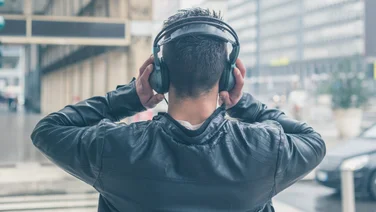To help us provide you with free impartial advice, we may earn a commission if you buy through links on our site. Learn more

It doesn’t matter where you are or what you’re doing – some music to accompany you is always a good idea. This is why Bluetooth speakers are so popular, and so important – whether you’re at the beach or by the pool, hanging out at a festival or hiding indoors while the sun blazes down outside, your tunes will always make a good time even better.
It will be better still if your speaker is performing at its absolute best, though. That’s why we’ve created this list of tips and tricks to help you get the most from your music – because the better your tunes sound, the better life feels.
Prioritise positioning…
Like almost every type of speaker, your Bluetooth speaker will sound better if it’s sympathetically positioned. This means putting it at a height where it’s roughly level with your ears – and, even though ‘stereo image’ isn’t really a thing if you’re listening to a single speaker, it’s nonetheless worth pointing the speaker towards you – especially if its drivers are all facing forwards rather than being angled out to create a greater sense of scale.
…and avoid obstacles
If you’re listening indoors, it’s best to position your speaker in a spot that isn’t too close to walls on either side or, ideally, behind it. ‘Free space’ is always a good idea if you want your speaker to sound natural and uncoloured, and boxing it in is never a good idea.
It’s not just obstacles around the speaker that can hamper the sound, either – if there are walls or floors between your source of music and the speaker it’s wirelessly connected to, you might experience signal disruption or even drop-outs. It’s always best to have your source of music and your speaker nice and close together if at all possible.
Optimise your connection
There’s more to optimising the connection between source and speaker than just keeping them near each other, though. The standard of the wireless connection is crucial in determining the sort of sound quality you end up enjoying – so you need to make sure that your source player is using the best codec it’s capable of, and that your speaker is capable of receiving it.

If there’s a discrepancy between what each of your devices can handle, then make sure you select the best codec they’re both capable of dealing with – you’ll find plenty of useful information on this in our guide to Bluetooth codecs.
Finally, if you’re indoors and your speaker is able to handle a wi-fi connection, that’s an avenue that’s worth investigating – quite often the sound available from Spotify Connect or Tidal Connect (for example) can be superior to the equivalent via a Bluetooth connection.
Investigate the app(s)
There’s a good chance your speaker has a control app, and there’s also a good chance that you have a music-streaming service app or two on your smartphone. It’s well worth delving into both the control app and the streaming service app to make sure your speaker and your streaming service are giving you everything they’re capable of giving.
For instance, in the ‘settings’ section of the Tidal app, there’s a section marked ‘audio and playback’. In here, you can specify the sort of streaming quality you want, both for mobile data and wi-fi streaming (in this instance you can choose between ‘low’, which is 96kbps and balances audio quality against data consumption, ‘high’, which is a CD-standard 16bit/44.1kHz, and the full-on hi-res 24bit/192kHz ‘max’ standard).
You can also switch ‘Dolby Atmos’ playback on or off – if your speaker supports Dolby Atmos, and your data allowance (and battery power) can survive it, switch it on and enjoy spatial audio from the content that’s mixed to take advantage of this format.
Don’t turn it up to 11
Every speaker has a ‘max’ volume level at which it can operate, and every source of music has a volume control too. You’ll want to avoid these maximum levels where possible, however, as they can badly affect sound quality. This is because, simply put, the speaker is not actually designed to work at its maximum volume level.

Rather, it’s been designed to operate efficiently and effectively at a more moderate level – and when it’s playing at this level, it has the additional power and dynamic headroom available to deal with any big fluctuations in the music you’re listening to. If you’re playing at maximum volume, it has nowhere to go if your recording suddenly ramps up the intensity, and your audio will end up sounding distorted.
Think of it like a car – just because the speedometer runs to 160 miles per hour, that doesn’t mean you’re meant to drive everywhere at that speed…






